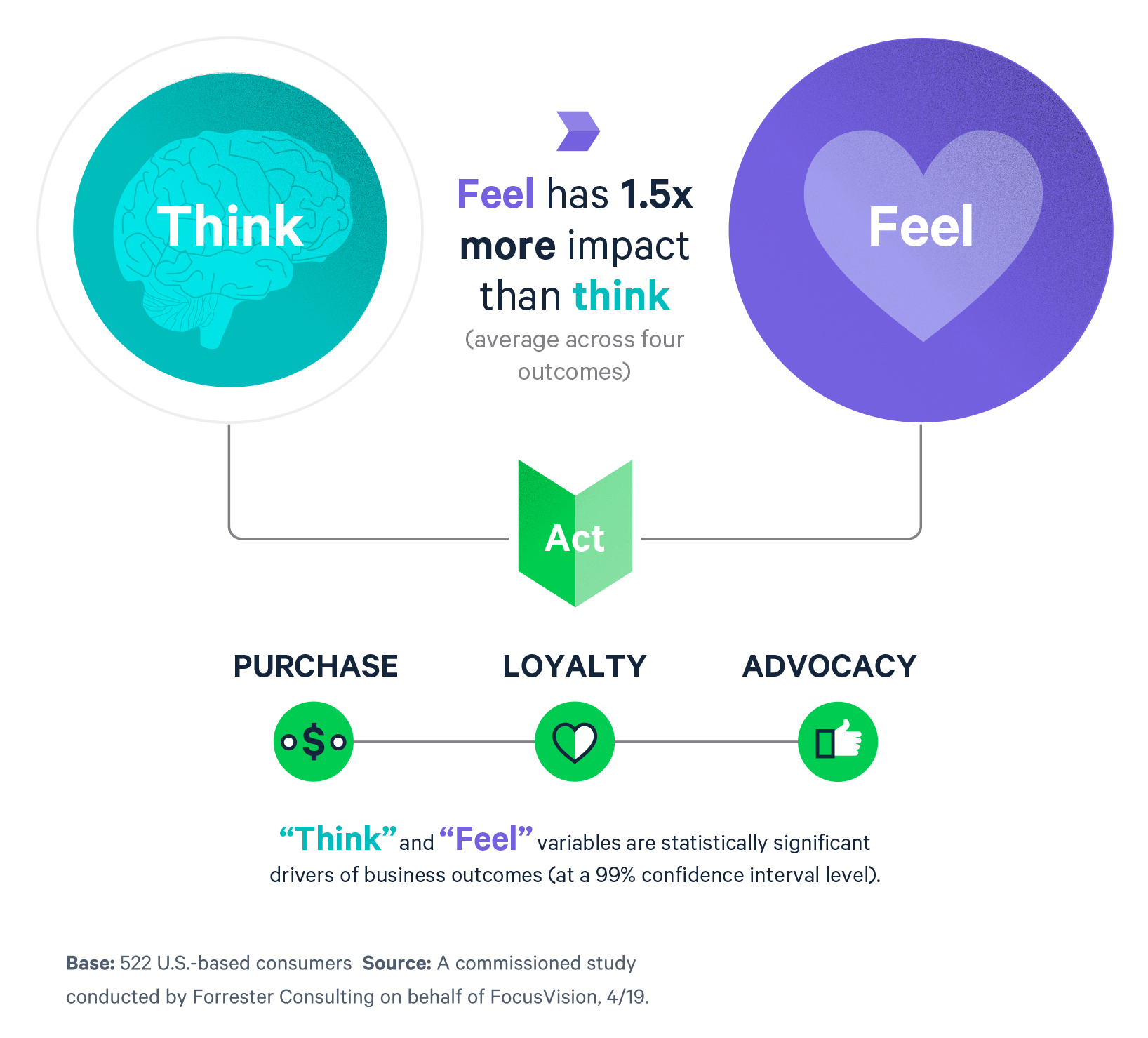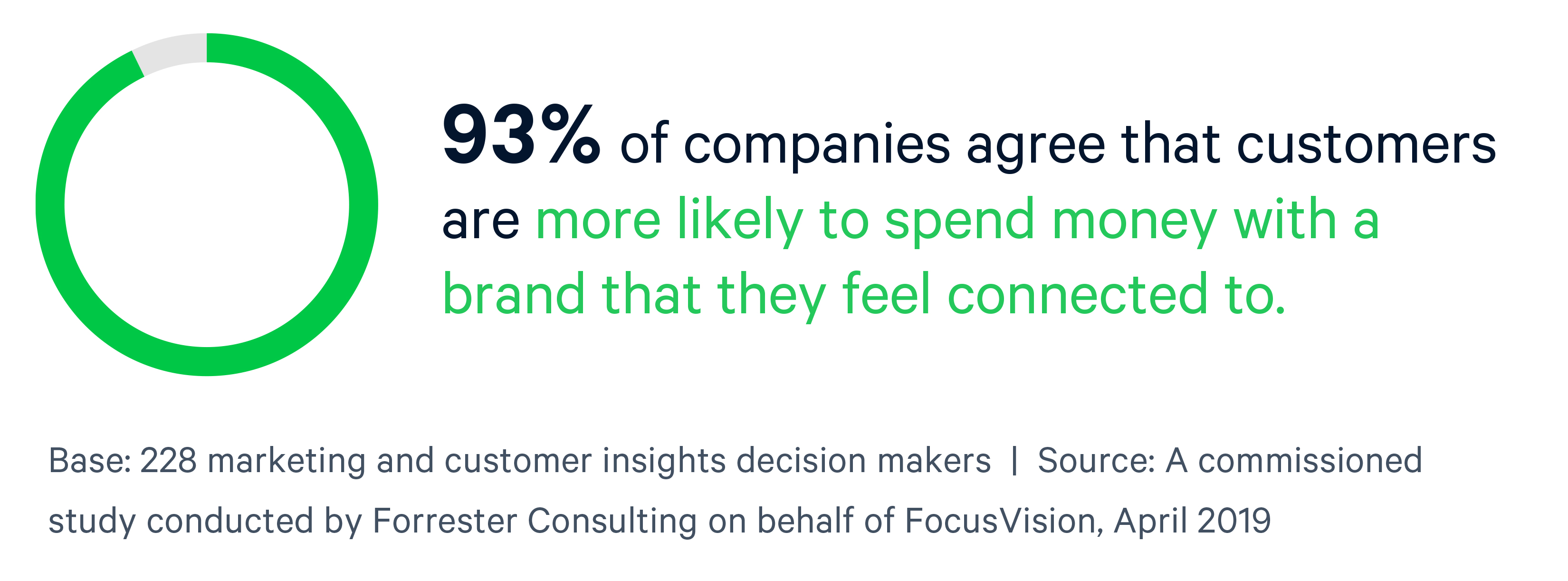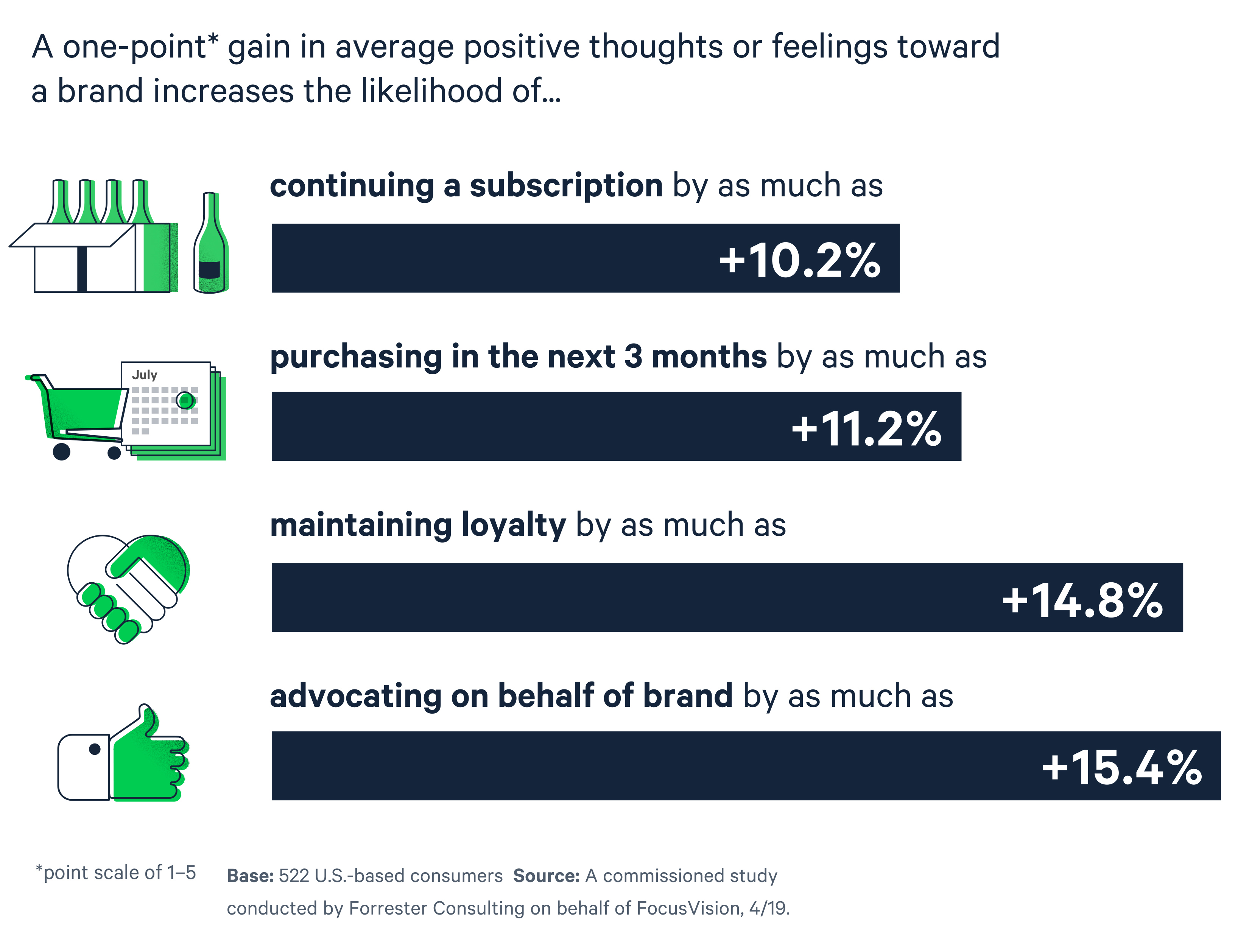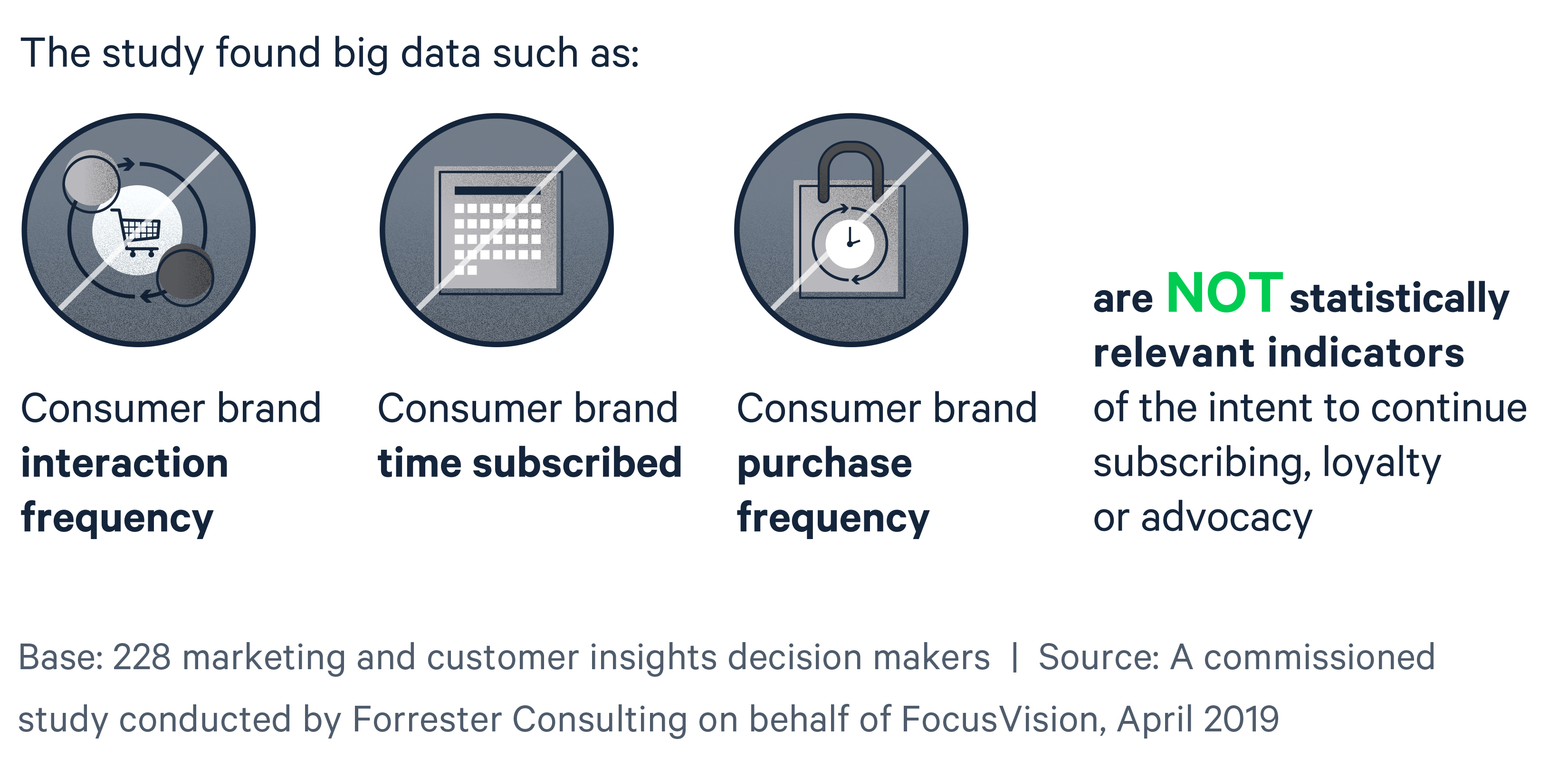By Zoe Dowling, SVP Research >> FocusVision
In recent years, big data promised to solve all our problems. Why ask people questions when we can tap into the plethora of data being gathered every second, from clicks and transactions to geolocation and sensors, providing hitherto unattainable detail on the actions they’ve taken?
To be sure, this type of data is extremely valuable. We know that people don’t always (intentionally or unintentionally) provide accurate accounts of their behaviors. Post-activity recall, particularly as time goes by, becomes shaky, not to mention social-desirability factors. Do you really want to admit to exactly how often you picked up your smartphone in a day, never mind how long you’ve spent matching gems? Big data, collected with the appropriate permissions, provides extremely useful and accurate information. However, it doesn’t tell you why people do the things they do; the emotion behind the actions.
The role of emotions in decision-making
Emotions are a core part of what makes us human. While there are cross-cultural variations on their expression and intensity of expression, we all have them. Yet we are often hesitant to talk about them and even less likely to admit to them playing any role in our decision-making process.
Over the past few decades, breakthroughs in academic investigation have pushed forward our understanding of emotions and their function in decision-making. The renowned neuroscientist Antonio Damasio developed his “somatic markers” hypothesis, where the feeling (emotion) attached to a memory is elicited during decision-making and influences the outcome.
Amos Tversky and Daniel Kahneman put forward two ways that we think: intuition (System 1) and reasoning (System 2). Intuition thinking is fast, automatic and emotional and takes place on a subconscious level while reasoning thinking is slow, logical and requires effort and takes place consciously. Tversky and Kahneman argue that most of our decisions are intuitive (and therefore based on emotion). This is often portrayed as a negative but intuition affords us decision-making at the speed and scale we need to navigate the world around us efficiently; otherwise, we would quickly become incapacitated.
So, we know that emotions play a role in decision-making, but to what degree?
Newly released research by Forrester Consulting, commissioned by FocusVision, found that how a customer thinks and feels about the brand are both statistically significant drivers of how they act (purchase, loyalty and advocacy).

Further, how a customer feels – their emotional connection with the brand – has a 1.5 times greater impact on driving positive business outcomes than what they think. In short, emotions drive business results.
Using the right data
In the decades since the new thinking on their role in decision-making emerged, there’s widespread acceptance around the importance of emotions. This is apparent in the same Forrester study, where 93% of companies agree that consumers are more likely to spend money with a brand that they feel connected to. Additionally, 88% agree that a better understanding of how their customers think and feel will help them win new customers.

However, despite the recognition about the role of emotion and the need to understand their customers in order to engage them in ways that will resonate, only 38% strongly agree they know why one customer chooses to buy from their brand while another doesn’t. There’s clearly a disconnect – and one that is explained when looking at the data that companies are using to understand their customers: more than half (56%) report relying more or fully on big data (versus small data) to answer questions about how their customers think and feel. Big data – clickstream, transactional, POS, CRM, location and so on – is an important way to understand what your customers are doing. However, it can’t tell you why they are doing it. It can’t convey how they think and feel.
This is demonstrated in the Forrester study, which found that big data – such as the frequency with which consumers interact with the brand, the length of time the consumer has subscribed to the brand and the frequency with which consumers purchase from the brand – are not statistically relevant indicators of how they’ll act – the intent to continue subscribing, loyalty or advocacy.
Insight data can predict business outcomes
On the other hand, brands can use small data – gathered by asking questions – to predict business outcomes. By understanding how customers think and feel about their brand and making improvements to these perceptions, companies can predict business outcomes.
According to the same Forrester study, brand qualities like trust, helpfulness and value play the strongest role in driving action. The return is apparent. By making a one-point improvement on a five-point scale, brands can increase the likelihood of customers continuing a subscription by as much as 10%; purchasing in the next three months by 11%; maintaining loyalty by almost 15%; and advocacy on behalf of the brand by 15%.

Understanding your Customer Truth™
Not knowing why your customer acts the way they do leaves opportunity on the table. The need to get close to them through small data (such as surveys, online research communities and interviews) is clear. Understanding their likes, dislikes, routines, habits, beliefs, values and all the other contextual information around how, where and why they are using your product or service provides essential information to drive your brand forward.
The Forrester study shows that small data isn’t just nice to have, it’s crucial when it comes to winning your customers’ hearts and minds and delivering experiences that don’t just keep them coming back but also make them advocates for your brand.

So, the next time someone in your company says there’s no time to ask those questions and/or “let’s just look at the big data,” here’s proof that the data you gather about your customers is essential.
Visit our resource library to download a copy of the Forrester study, commissioned by FocusVision: http://bit.ly/2lAKIq1.
